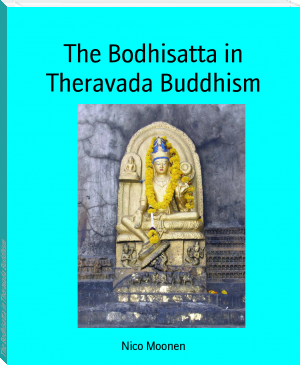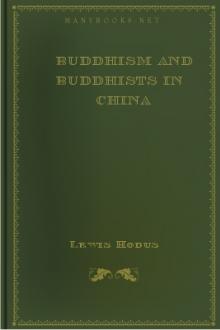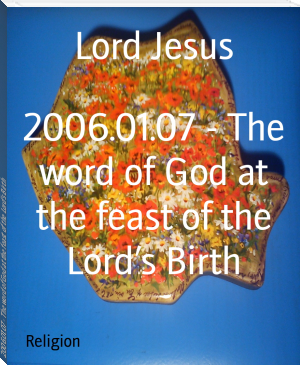The Bodhisatta in Theravada Buddhism by Nico Moonen (best books to read now .TXT) 📖

- Author: Nico Moonen
Book online «The Bodhisatta in Theravada Buddhism by Nico Moonen (best books to read now .TXT) 📖». Author Nico Moonen
[257] Upatissa 1995, p. 189.
[258] Buddhaghosa 1956, p. 353.
[259] Bodhi 1978a, p. 311.
[260] D.30:1.19/21, in: Walshe 1996, p. 447-448.
[261] D.30:1.22/24, in: Walshe 1996, p.448-449.
[262] D.30:1.25/27, in: Walshe 1996, p.449-450.
[263] D.30:2.1/3, in: Walshe 1996, p.451-452.
[264] D.30:2.4/6, in: Walshe 1996, p.452-453.
[265] Bodhi 1978a, p. 260-261, 305; Ledi 2000, p. 3; Nārada 1980, p. 596.
[266] Ledi 2000, p. 10.
[267] Upatissa 1995, p. 189; Buddhaghosa 1956, p. 353.
[268] D.30:1.22/24, in: Walshe 1996, p.448-449.
[269] D.30. 2.13/15, in: Walshe 1996, p.455.
[270] Bodhi 1978a, p. 260.
[271] Ledi 2000 p. 3; Bodhi 1978a, p. 261; Horner 1975a, p. 21 (II A:139-140); Horner 1978, p. 156.
[272] Nārada 1980, p. 597-599.
[273] Upatissa 1995, p. 189.
[274] Buddhaghosa 1956, p. 353.
[275] D.30:1.28/30, in: Walshe 1996, p.450.
[276] See the Simile of the Saw (M.21).
[277] Bodhi 1978a, p. 260-261, 311; Ledi 2000, p. 3, 10-11; Nārada 1980, p. 599-601.
[278] Horner 1975a, p. 21 (II A:140); Horner 1978, p. 156/157.
[279] Upatissa 1995, p. 189; Buddhaghosa 1956, p. 353.
[280] D.30:2.10/12, in: Walshe 1996, p.454.
[281] D.30:2.16/18, in: Walshe 1996, p.455-456.
[282] D.30:2.25/27, in: Walshe 1996, p. 455; Upatissa 1995, p. 188-190.
[283] Bodhi 1978a, p. 260-261; Ledi 2000, p. 4.
[284] Buddhaghosa 1956, p. 353; Bodhi 1978a, p. 260-261, 311; Ledi 2000, p. 4; Horner 1975a, p. 22 (II A:154); Horner 1978, p. 159-160; Nārada 1980, p. 603-604.
[285] Upatissa 1995, p. 189.
[286] Horner 1991, p. 13-17.
[287] Upatissa 1995, p. 189; Buddhaghosa 1956, p. 353; Bodhi 1978a, p. 260-261, 311; Ledi 2000, p. 4; Nārada 1980, p. 604; D.30:1.10, in: Walshe 1996, p. 445; Horner 1975a, p. 22-23 (II A:159-160); Horner 1978, p. 160-161.
[288] D.30:1.10, in: Walshe 1996, p. 445.
[289] D.30:1.7, in: Walshe 1996, p. 444.
[290] D.30:1.31, in: Walshe 1996, p. 450/451.
[291] Bodhi 1978a, p. 297.
[292] Nārada 1980, p. 604-605.
[293] Upatissa 1995, p. 189; Nyānatiloka 1975, p. 371 (IX, 325); Buddhaghosa 1956, p. 352-353 (IX, 124); D.30:1.16/18, in: Walshe 1996, p.446-447.
[294] Equanimity is not equal with indifference.
[295] Bodhi 1978a, p. 260-261, 311; Ledi 2000, p. 4, 11; Horner 1975a, p. 23 (II A:164-165); Horner 1978, p. 161-162; Nārada 1980, p. 606-607.
[296] Nārada 1980, p. 606-607.
[297] Bodhi 1978a, p. 314.
[298] Bodhi 1978, p. 49.
[299] Saddhatissa, H. (tr.): The Birth-Stories of the Ten Bodhisattas and the Dasabodhisattupattikathā, being a Translation and Edition of the Dasabodhisattupattikathā. London 1975, p. 54.
[300] Horner, I.B.: Chronicle of Buddhas (Buddhavamsa). London 1975 [a], p. 15.
[301] See: Horner 1975a, p. 30 (III.11), 33 (IV.12), 37 (V.18), 39 ((VI.12), 42 (VII.13), 45 (VIII.14), 47 (IX.13), 50 (X.15), 53 (XI.12), 56 (XII.13), 59 (XIII.15), 61 (XIV.12), 64 (XV.11), 66 (XVI.10), 68 (XVII.10), 71 (XVIII.13), 73 (XIX.9), 75 (XX.13), 78 (XXI.12), 81 (XXII.15), 84 (XXIII.10), 87 (XXIV 12), 91 (XXV 16).
[302] See: Horner 1975a, p. xxvii-xxviii.
[303] See: Horner 1975a, p. 9, 56, 61, 68, 71, 75, 78, 81, 84.
[304] Aeons cannot be scientifically measured, but they can be categorized as follows: 1) sāra-kappa in which one Buddha arises; 2) manda-kappa in which two Buddhas arise; 3) vara-kappa in which three Budhas arise; 4) sāramanda-kappa in which four Buddhas arise; 5) bhadda-kappa in which five Buddhas arise. And there is the void aeon (suñña-kappa) in which no Buddha arises. (See: Horner 1975a, p. xxvii-xxviii and Saddhatissa 1975, p. 93-95, note 8).
[305] Saddhatissa 1975, p. 19.
[306] D.26 : 24, in: Walshe, Maurice (tr.): The Long Discourses of the Buddha. A Translation of the Dīgha Nikāya. Kandy 1996, p. 403.
[307] U Chit Tin, Sayagyi; assisted by William Pruitt: The Coming Buddha Ariya Metteyya. Kandy 1992 (2nd rev. ed.), The Wheel No. 381/383, p. 29; Pruitt, William (tr.): 'Anāgatavamsa. The Chronicle of the future Buddha,' in: The Coming Buddha Ariya Metteyya, Kandy 1992, The Wheel No. 381/383, p. 49 § 5.
[308] Saddhatissa 1975, p. 29.
[309] Norman, K.R.: Pāli Literature, including the Canonical Literature in Prakrit and Sanskrit of all the Hînayāna Schools of Buddhism. Wiesbaden 1983, p. 161.
[310] Steiner, Rudolf: Buddha und Christus. Die Sphäre der Bodhisattvas. Vortrag gehalten im Mailänder Zweig, 21. September 1911.
[311] Ikeda, Daisaku: Buddhism, the First Millennium, transl. by Burton Watson, Tokyo, 1977, p. 146.
[312] D.26 : 22-25, in: Walshe 1996, p. 403-404.
[313] Horner 1975a, p. 97 (XXVII, 19).
[314] Norman 1983, p.155.
[315] One lakh = 100,000.
[316] Saddhatissa 1975, p.35-36.
[317] This is 2,25 lifetimes only. But since the women marry at the age of 500, the Dhamma in that time might last about 360 generations. And then it is for the weal and happiness of many.
[318] See: Pruitt 1992, p. 54-60 § 5-134.
[319] Saddhatissa 1975, p. 54-55.
[320] cited in: Horner 1975a, p. xvii, note 2.
[321] cited in: Horner 1975a, p. xvii, note 2.
[322] Norman, K.R. (tr.): The Group of Discourses (Sutta-Nipāta), Vol. I, London 1984, p. 164; Nyānaponika (Übers.): Sutta-Nipāta : Früh-buddhistische Lehr-Dichtungen aus dem Pali-Kanon, (2. revid. Aufl.) Konstanz 1977, p. 210-211.
[323] Malalasekera, G.P.: Dictionary of Pali Proper Names, London 1974, Vol. I, p. 35-37.
[324] U Chit Tin 1992, p. 18-19.
[325] Malalasekera 1974, Vol. I, p. 31-35.
[326] Saddhatissa 1975, p. 31-32.
[327] idem, p. 32.
[328] idem, p. 32.
[329] idem, p. 54-61.
[330] Saddhatissa 1975, p. 19.
[331] U Chit Tin 1992, p. 44-45.
[332] Pruitt 1992, p. 60-61 § 138-142.
[333] According to Theravāda tradition there will be one suñña-kappa (= 4 times an asankheyya) after this auspicious aeon.
[334] Saddhatissa 1975, p. 62 (II.19).
[335] Horner 1975a, p. xxix.
[336] Saddhatissa 1975, p. 62-63.
[337] This is not the correct way according to mainstream Theravāda. This is discussed further after these nine stories.
[338] Saddhatissa 1975, p. 64-66.
[339] At that time Suddha had not made an aspiration to become a future Buddha. And in the story nowhere is it mentioned that he aspired to become a Buddha.
[340] Saddhatissa 1975, p. 67-70.
[341] Saddhatissa 1975, p. 71-73. – This story is somewhat like that of Vessantara. About the giving of one’s own children, see the story of Vessantara.
[343] Saddhatissa 1975, p. 74-75.
[344] Saddhatissa 1975, p. 78-79.
[345] Are animals able to have such thoughts and wishes?
[346] Saddhatissa 1975, p. 80-81.
[347] Why is the word ‘too’ used here? He offered his gift to a Paccekabuddha, not to a Perfect Buddha.
[348] The gift was made to a Paccekabuddha, not to a Perfect Buddha. And there is no prophecy.
[349] Saddhatissa 1975, p. 82-87.
[350] Takkasila = Taxila.
[351] The Buddha would not have approved this behaviour. And there is no prophecy by the Buddha!
[352] Saddhatissa 1975, p. 88-92.
[353] Who taught him about Nibbāna? Did he know what this word means?
[354] Who taught him this meditation?
[355] The original story says: “Immediately the neck broke away from the head.”
[356] Saddhatissa 1975, p. 103, note 42, and p. 102, note 35.
[357] D.16: chapter V, 5-6, in: Vajira, Sister (tr.): Last Days of the Buddha. The Mahā-Parinibbāna Sutta. Being the 16th text of the Dīgha-Nikāya, Kandy 1964, The Wheel No. 67/69, p. 58-59.
[358] Rhys Davids, T.W. (tr.): Kūtadanta Sutta (The Wrong Sacrifice and the Right), Kandy 1968, The Wheel No. 120.
[359] See: Saddhatissa, H. (tr.): The Birth-Stories of the Ten Bodhisattas and the Dasabodhisattupattikathā, being a Translation and Edition of the Dasabodhisattupattikathā. London 1975, p. 56-92.
[360] He becomes a teacher of gods and men, not of animals, asuras, demons, unhappy spirits, beings in hell.
[361] See: M.27 in: Soma Thera (tr.): The Lesser Discourse of the Buddha on the Elephant-footprint Simile, Kandy 1960, Bodhi Leaves No. B.5, p. 20-26; see also: Neumann, Karl Eugen (Übers.): Die Reden Gotamo Buddhos. Aus der mittleren Sammlung Majjhimanikāyo des Pālo-Kanons, Wien 1956, (Die Elefantenspur), p. 202-204; Horner, I.B. (Transl.): The Collection of the Middle length Sayings (Majjhima-Nikāya), Vol. I. : The first fifty discourses (Mūlapaņņāsa). Oxford 2000, p. 224-226.
[362] Katz, Nathan: Buddhist Images of Human Perfection. The Arahant of the Sutta Pitaka Compared with the Bodhisattva and the Mahāsiddha. Delhi 1989, p. 165-166, 190, 194-202 and 265.
[363] See A.X.177 in: Nyanatiloka (Übers.): Die Lehrreden des Buddha aus der Angereihten Sammlung Anguttara-Nikāya. 3. revid. Neuauflage, Köln 1969, Bd. 5, p. 119-121; or in: Winternitz, M.: Der ältere Buddhismus nach Texten des Tipitaka, 2. erw. Aufl., Tübingen 1929, p. 96-97.
[364] And if one continues to be attached to the teaching of not-self, to emptiness, then one cannot attain salvation. The Dhamma is a means to reach the other shore. One should not carry the vessel after reaching that shore. The teaching of the Buddha is like a map, which is not needed anymore as soon as the goal is reached.
[365] King, Sallie B.: Buddha Nature. Albany 1991, p. 1-2, 42; Conze, Edward: A Short History of Buddhism. (repr.) London 1986, p. 62.
[366] See: Horner, I.B. (tr.): 'Discourse to Ganaka-Moggalāna (Majjhima Nikāya No. 107)', in: Taming the Mind. Discourses of the Buddha. Kandy 1973, The Wheel No. 51, p. 2-10.
[367] See: A. II, 131-134, in: Nyanatiloka (Übers.): Die Lehrreden des Buddha aus der Angereihten Sammlung Anguttara-Nikāya. 3. revid. Neuauflage, Köln 1969, Bd. 1, p. 87.
Imprint
Publication Date: 08-16-2014
All Rights Reserved





Comments (0)